
漢德百科全書 | 汉德百科全书
 Jordanien
Jordanien
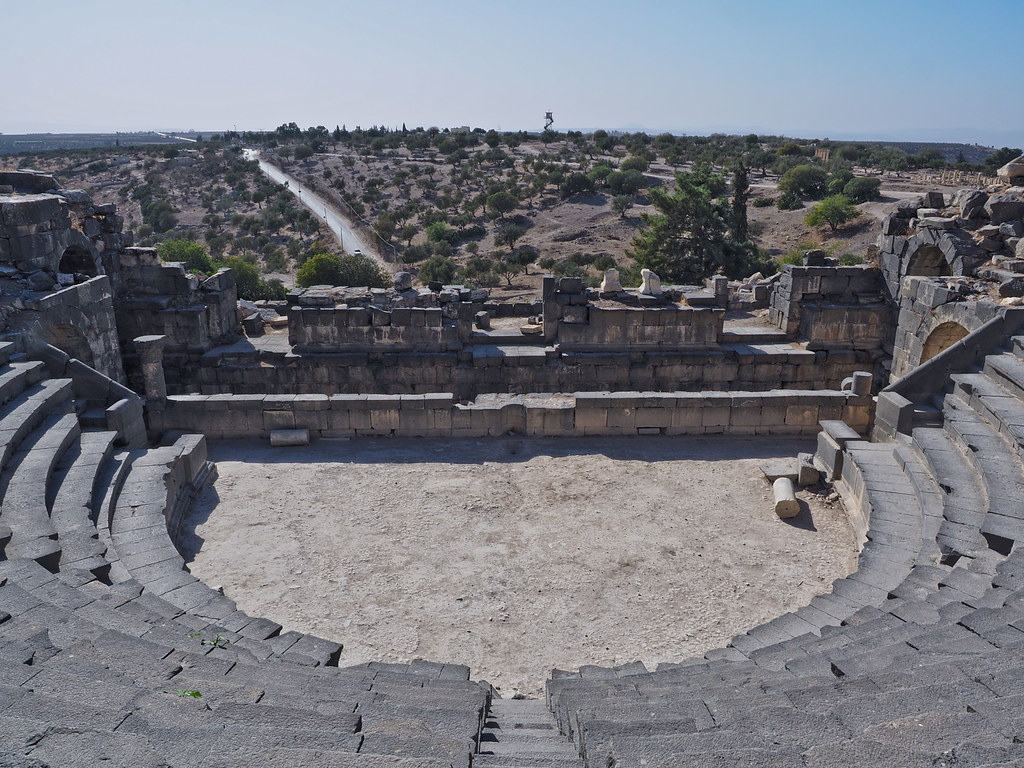
 *Mittelmeer
*Mittelmeer
 Ägypten
Ägypten
 Algerien
Algerien
 Belgien
Belgien
 Bulgarien
Bulgarien
 Deutschland
Deutschland
 Frankreich
Frankreich

 Geschichte
Geschichte

 Geschichte
Geschichte
 H 1000 - 500 vor Christus
H 1000 - 500 vor Christus

 Geschichte
Geschichte
 I 500 - 0 vor Christus
I 500 - 0 vor Christus

 Geschichte
Geschichte
 J 0 - 500 nach Christus
J 0 - 500 nach Christus
 Israel
Israel
 Italien
Italien
 Jordanien
Jordanien
 Kroatien
Kroatien
 Libanon
Libanon
 Libyen
Libyen
 Marokko
Marokko
 Niederlande
Niederlande
 Portugal
Portugal
 Rumänien
Rumänien
 Schweiz
Schweiz
 Serbien
Serbien
 Syrien
Syrien
 Tunesien
Tunesien
 Türkei
Türkei
 Ungarn
Ungarn
 Vereinigtes Königreich
Vereinigtes Königreich

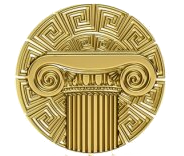 Zivilisation
Zivilisation
 Zypern
Zypern

Als römische Architektur bezeichnet man die Baukunst der Römer zur Zeit der römischen Republik und der Kaiserzeit. Die römische Architekturgeschichte umfasst damit einen Zeitraum von etwa neun Jahrhunderten (500 v. Chr.–400 n. Chr.). Die Epochen der römischen Architektur werden nach einzelnen Herrschern, Dynastien oder retrospektiv formulierten historischen Zeitabschnitten benannt. Die seitens der Klassischen Archäologie geprägten Epochen- oder Stilbegriffe finden keine Entsprechungen in der schriftlichen antiken Überlieferung, entsprechen also nicht antiker Wahrnehmung und Einteilung.
古罗马建筑(英语:Ancient Roman architecture),是指由古罗马人创造并且扩展到地中海沿岸其所控制疆域的一种新风格的建筑艺术,经常简称为罗马建筑(英语:Roman architecture)。它直接继承了古希腊晚期的建筑成就,而且将其向前大大推进,使之在1到3世纪达到奴隶制时代全世界建筑的顶峰[1][2]。在西方学术界传统上特指古罗马共和国与帝国时期的建筑[3],中文学术界定义较为宽泛,有时可以包括前期的伊特鲁里亚建筑[4],也可以包括分裂之后的西罗马帝国建筑[2],但是一般不包含东罗马帝国建筑。


红海(阿拉伯语:البحر الأحمر;希伯来语:יַם סוּף;法语:Mer Rouge;英语:Red Sea)位于非洲东北部与阿拉伯半岛之间,呈狭长型,长约2250公里,最宽355公里,均深490公尺,最深2211公尺,面积438,000平方公里。其西北面通过苏伊士运河与地中海相连,南面通过曼德海峡与亚丁湾相连。
紅海是直接由希臘文、拉丁文、阿拉伯文翻譯過來。虽然红海在大多数时候并不呈红色,但是偶尔会季节性地出现大片红色藻类,这提供了其名称的一个可能的来源。另一些学者认为,“红”来源于其相对于命名者的方位(许多民族都有以颜色指代方向的传统),指南方或者西方。
另外一些该名稱的可能來源是:附近的紅色山脈;一個名稱為紅色的本地種族;紅地的海(古埃及稱沙漠為紅地)等。
紅海(こうかい、ヘブライ語: יַם סוּף, アラビア語: البحر الأحمر, フランス語: Mer Rouge)は、アフリカ東北部と、アラビア半島とに挟まれた湾である。
長さ2250km、幅最大355km、面積438,000km2、平均水深491m、最深部2211m。海水は強い蒸発作用(少ない降雨)、流入河川無し、インド洋との限られた循環などにより塩分濃度は3.6%-3.8%と高い。北部にはシナイ半島があり、チラン海峡を通じてアカバ湾とつながっている。また、北西部にはスエズ湾があり、スエズ湾はスエズ運河を経て地中海とつながっているほか、南部はバブ・エル・マンデブ海峡を経てアデン湾とつながっている。同海峡は国際海峡である。
域内には大きな島嶼は無く、沿岸部に小島嶼が数多くある。エリトリアのダフラク諸島、サウジアラビアのファラサン諸島、イエメンのカマラン島などがある。
2011年12月から2012年1月にかけ、イエメン沖のズバイル諸島で海底火山の活動によって新しい島が生まれた[1]。
The Red Sea (also the Erythraean Sea, Arabic: البحر الأحمر) is a seawater inlet of the Indian Ocean, lying between Africa and Asia. The connection to the ocean is in the south through the Bab el Mandeb strait and the Gulf of Aden. To the north lie the Sinai Peninsula, the Gulf of Aqaba, and the Gulf of Suez (leading to the Suez Canal). The Red Sea is a Global 200 ecoregion. The sea is underlain by the Red Sea Rift which is part of the Great Rift Valley.
The Red Sea has a surface area of roughly 438,000 km2 (169,100 mi2),[1][2] is about 2250 km (1398 mi) long and, at its widest point, 355 km (220.6 mi) wide. It has a maximum depth of 3,040 m (9,970 ft) in the central Suakin Trough,[3] and an average depth of 490 m (1,608 ft). However, there are also extensive shallow shelves, noted for their marine life and corals. The sea is the habitat of over 1,000 invertebrate species, and 200 soft and hard corals. It is the world's northernmost tropical sea.
La mer Rouge (arabe : البحر الأحمر al-Bahr al-Ahmar, hébreu ים סוף Yam Souph) est une mer intracontinentale du bassin Indo-Pacifique entre l’Afrique du Nord et le Moyen-Orient d’une superficie d’environ 450 000 km². C'est une mer d'une grande importance stratégique et commerciale qui permet aux navigateurs en provenance de la mer Méditerranée et à destination de l'océan Indien, ou vice-versa, de ne pas être contraints de faire le tour de l'Afrique.
Il Mar Rosso (in arabo: البحر الأحمر, al-Baḥr al-Aḥmar; ebraico: ים סוף, Yam Suf; tigrino: ቀይሕ ባሕሪ, Qeyḥ baḥri) è un mare del Vicino Oriente compreso tra l'Africa e la penisola araba, comunicante con il mar Mediterraneo attraverso il canale di Suez, e con l'Oceano Indiano tramite lo stretto di Bab el-Mandeb.
El mar Rojo (en árabe, البحر الأحمر al-Baḥr al-Aḥmar, al-Baḥru l-’Aḥmar y ים סוף Yam Suff en hebreo, que se traduce como "mar de los juncos" o "mar de las cañas"1) La traducción hebrea también puede ser referencia a un lago de agua dulce o salada (los juncos son fauna de agua dulce2) al norte del actual canal de Suez que fue drenado en su construcción, o al extremo de Aqaba; otras alternativas lo ubican en el lago de Sorbona, al norte del Sinaí, el cual es un brazo del mar mediterraneo.3 Es un golfo o cuenca del océano Índico entre África y Asia. La conexión con el océano es hacia el Sur, a través del estrecho de Bab el-Mandeb y el golfo de Adén. Hacia el norte se encuentra la península del Sinaí, el golfo de Aqaba y el golfo de Suez (que a su vez llega al canal de Suez). El mar tiene unos 2.200 km de largo y su ancho máximo es de 335 km. La profundidad máxima es de 2.130 m, siendo la media de unos 500 m. También posee extensas plataformas de escasa profundidad, en las que se encuentra abundante vida marina y corales. La superficie total es de, aproximadamente, 450.000 km². Este mar es parte del valle del Gran Rift y es una importante vía de comunicación entre Europa y el Extremo Oriente.
Кра́сное мо́ре (др.-греч. Ερυθρὰ Θάλασσα Эритра Таласса, араб. البحر الأحمر Bahr el-Ahmar, ивр. ים סוף Yam Suf, англ. Red Sea) — внутреннее море Индийского океана, расположенное между Аравийским полуостровом и Африкой в тектонической впадине. На севере море примыкает к Суэцкому перешейку, который разделяет два залива: Суэцкий и Акаба, — через Суэцкий канал соединяется с Средиземным морем, а с Аравийским морем на юге соединяется Баб-эль-Мандебским проливом («Врата слёз») с Аденским заливом. Красное море — самое солёное море из входящих в состав Мирового океана и единственное в мире, в которое не впадает ни одной реки.


ジャラシュ(ジェラシュ、جرش, Jerash)はヨルダン北部の都市でジャラシュ県の県都。首都アンマンからは北へ48kmの位置にある。ジャラシュ県の風土は多様で、標高が1,100mを超える高く寒冷な山地から、標高300mほどの肥沃な谷間などがあり、農耕が盛んである。ジャラシュの町は標高600mの丘にある。
ジャラシュは古代にはゲラサ(Gerasa)と呼ばれていた。シリア南部のデカポリス(十都市連合)のうちの一つであり、現在も古代ローマ時代の都市遺跡がよく残っている。
2004年の国勢調査によれば、ジャラシュ市の人口は31,650人でヨルダン国内で14番目に人口の多い街である。ジャラシュ県の人口は153,650人で、人口密度はイルビド県の次に高い[1]。ジャラシュの人口の多数派はアラブ人であるが、オスマン帝国時代末期にロシアから逃れてきた北カフカスのチェルケス人や、トルコから逃れてきたアルメニア人がヨルダンの他都市と比べ人口のうちで占める割合が若干多い。宗教はイスラム教が多く、次いで正教会およびカトリックのキリスト教徒が大きな割合を占める。
Jerash (Arabic: جرش; Ancient Greek: Γέρασα) is a city in northern Jordan. The city is the administrative center of the Jerash Governorate, and has a population of 50,745 as of 2015. It is located 48 kilometres (30 mi) north of the capital city Amman.
The earliest evidence of settlement in Jerash is in a Neolithic site known as Tal Abu Sowan, where rare human remains dating to around 7500 BC were uncovered.[2] Jerash flourished during the Greco and Roman periods until the mid-eighth century CE, when the 749 Galilee earthquake destroyed large parts of it, while subsequent earthquakes contributed to additional destruction. However, in the year 1120, Zahir ad-Din Toghtekin, atabeg of Damascus ordered a garrison of forty men to build up a fort in an unknown site of the ruins of the ancient city, likely the highest spot of the city walls in the north-eastern hills. It was captured in 1121 by Baldwin II, King of Jerusalem, and utterly destroyed.[3][4] Then, the Crusaders immediately abandoned Jerash and withdrew to Sakib (Seecip); the eastern border of the settlement.[5][6]
Jerash was then deserted until it reappeared by the beginning of the Ottoman rule in the early 16th century. In the census of 1596, it had a population of 12 Muslim households.[7] However, archaeologists found a small Mamluk hamlet in the Northwest Quarter[8] which indicates that Jerash was resettled before the Ottoman era. The excavations conducted since 2011 have shed light on the Middle Islamic period as recent discoveries have uncovered a large concentration of Middle Islamic/Mamluk structures and pottery.[9] The ancient city has been gradually revealed through a series of excavations which commenced in 1925, and continue to this day.[10]
Jerash today is home to one of the best preserved Greco-Roman cities, which earned it the nickname of "Pompeii of the East".[citation needed] Approximately 330,000 visitors arrived in Jerash in 2018, making it one of the most visited sites in Jordan.[11] The city hosts the Jerash Festival, one of the leading cultural events in the Middle East that attracts tens of thousands of visitors every year.[12]
Jerash1 est le chef-lieu de la province de Jerash dans le royaume de Jordanie. La population de l'agglomération dépasse 120 000 habitants.
La ville moderne s'est établie autour du site de l'antique cité de Gérasa, parfois francisée en Gérase.
Jerash (in arabo: جرش), l'antica Gerasa, è la capitale dell'omonima regione giordana, nel nord del paese, a circa trenta chilometri dalla capitale Amman. La città è situata sulle rive del fiume Wadi Jerash[2], che fa parte del bacino idrografico del Giordano, e prospera grazie al fertile terreno agricolo circostante.
Gerasa (en idioma árabe: جرش, en griego antiguo: Γέρασα) es el nombre de una antigua ciudad de la Decápolis. Sus ruinas representan una de las ciudades romanas más importantes y mejor conservadas del Próximo Oriente, y se ubican en la gobernación de Gerasa, al noroeste de Jordania.
Джа́раш[2], также Дже́раш (араб. جرش; др.-греч. Γέρασα — Гераса) — город на севере Иордании. Расположен примерно в 48 км к северу от Аммана, на высоте 527 м над уровнем моря[3]. Население по данным переписи 2004 года составляет 31 650 человек.
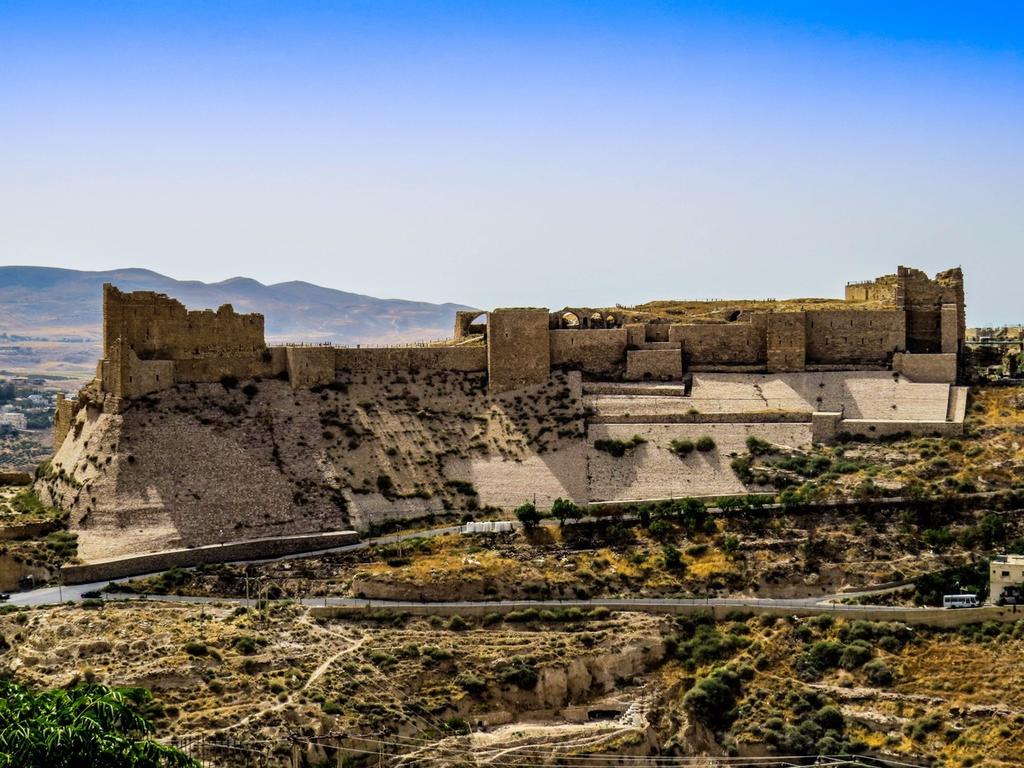
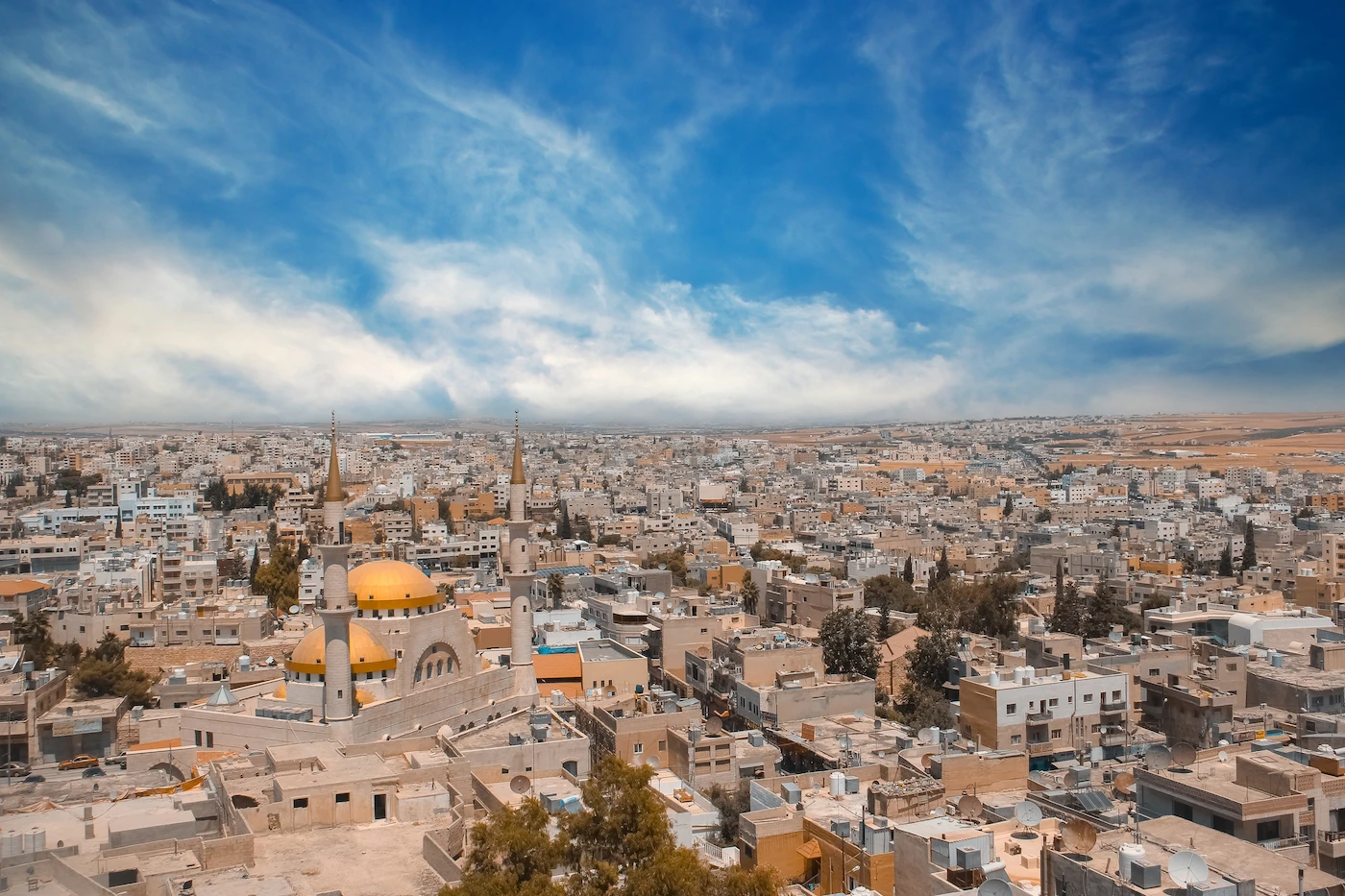


Ohne Zweifel ist die Felsstadt Petra eine der beeindruckendsten Sehenswürdigkeiten, die das Königreich Jordanien zu bieten hat. Reisende aus aller Herren Länder hat sie seit jeher in ihren Bann gezogen. Daher ist es auch nicht weiter verwunderlich, dass die antike Stätte vor nun mehr als zwei Jahrzehnten in die Liste des UNESCO-Weltkulturerbes aufgenommen wurde.
Immer wenn es in der Vergangenheit darum ging nach dem Vorbild der Antike neue Weltwunder zu benennen, wurde auch die Felsstadt Petra ins Spiel gebracht. Unmittelbar in den rötlichen Fels des Berglandes von Edom geschlagen, tut sich das imposante Eingangsportal der Felsstadt Petra vor dem Betrachter auf und gibt beim Durchschreiten den Blick auf die dahinter gelegenen Grabmale frei.
(Quelle:http://www.einfach-sehenswert.de/felsstadt-petra-unesco-weltkulturerbe-der-antike/)

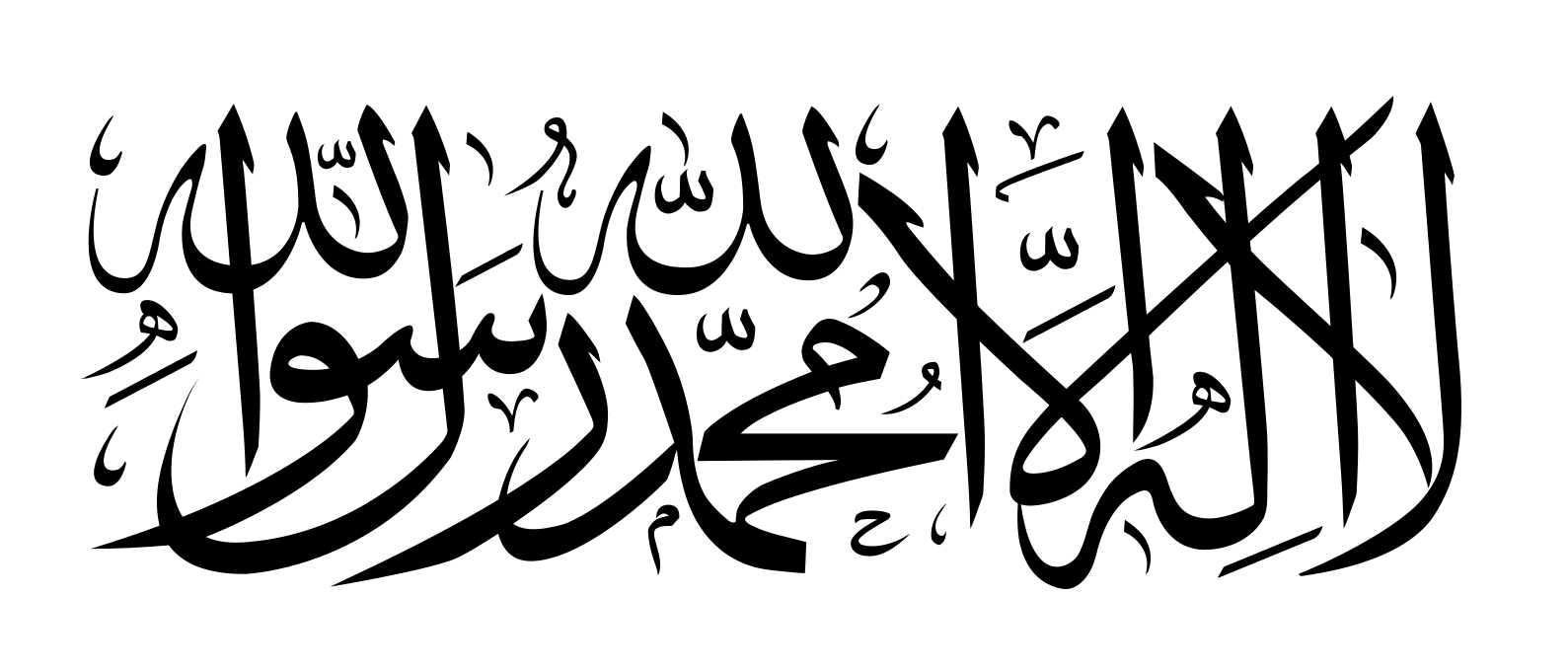 Afghanistan
Afghanistan
 Ägypten
Ägypten
 Albanien
Albanien
 Angola
Angola
 Antigua und Barbuda
Antigua und Barbuda
 Argentinien
Argentinien
 Armenien
Armenien
 Australien
Australien
 Bahrain
Bahrain
 Bangladesh
Bangladesh
 Barbados
Barbados
 Belgien
Belgien
 Belize
Belize
 Benin
Benin
 Bolivien
Bolivien
 Botsuana
Botsuana
 Brasilien
Brasilien
 Brunei Darussalam
Brunei Darussalam
 Bulgarien
Bulgarien
 Burkina Faso
Burkina Faso
 Burundi
Burundi
 Chile
Chile
 China
China
 Columbia
Columbia
 Costa Rica
Costa Rica
 Côte d´Ivoire
Côte d´Ivoire
 Cuba
Cuba
 Dänemark
Dänemark
 Demokratische Republik Kongo
Demokratische Republik Kongo
 Deutschland
Deutschland
 Dominica
Dominica
 Dominikanische Republik
Dominikanische Republik
 Dschibuti
Dschibuti
 Ecuador
Ecuador
 Estland
Estland

 Europäische Union
Europäische Union
 Fidschi
Fidschi

 Finanz
Finanz
 Finnland
Finnland
 Frankreich
Frankreich
 Gabun
Gabun
 Gambia
Gambia
 Georgien
Georgien
 Ghana
Ghana
 Grenada
Grenada
 Griechenland
Griechenland
 Guatemala
Guatemala
 Guinea
Guinea
 Guinea-Bissau
Guinea-Bissau
 Guyana
Guyana
 Honduras
Honduras
 Hongkong Tebiexingzhengqu-HK
Hongkong Tebiexingzhengqu-HK
 Indien
Indien
 Indonesien
Indonesien
 Irland
Irland
 Island
Island
 Israel
Israel
 Italien
Italien
 Jamaika
Jamaika
 Japan
Japan
 Jemen
Jemen
 Jordanien
Jordanien
 Kambodscha
Kambodscha
 Kamerun
Kamerun
 Kanada
Kanada
 Kap Verde
Kap Verde
 Kasachstan
Kasachstan
 Katar
Katar
 Kenia
Kenia
 Kirgisistan
Kirgisistan
 Kroatien
Kroatien
 Kuwait
Kuwait
 Laos
Laos
 Lesotho
Lesotho
 Lettland
Lettland
 Liberia
Liberia
 Liechtenstein
Liechtenstein
 Litauen
Litauen
 Luxemburg
Luxemburg
 Macau Tebiexingzhengqu-MO
Macau Tebiexingzhengqu-MO
 Madagaskar
Madagaskar
 Malawi
Malawi
 Malta
Malta
 Marokko
Marokko
 Mauretanien
Mauretanien
 Mauritius
Mauritius
 Mexiko
Mexiko
 Moldawien
Moldawien

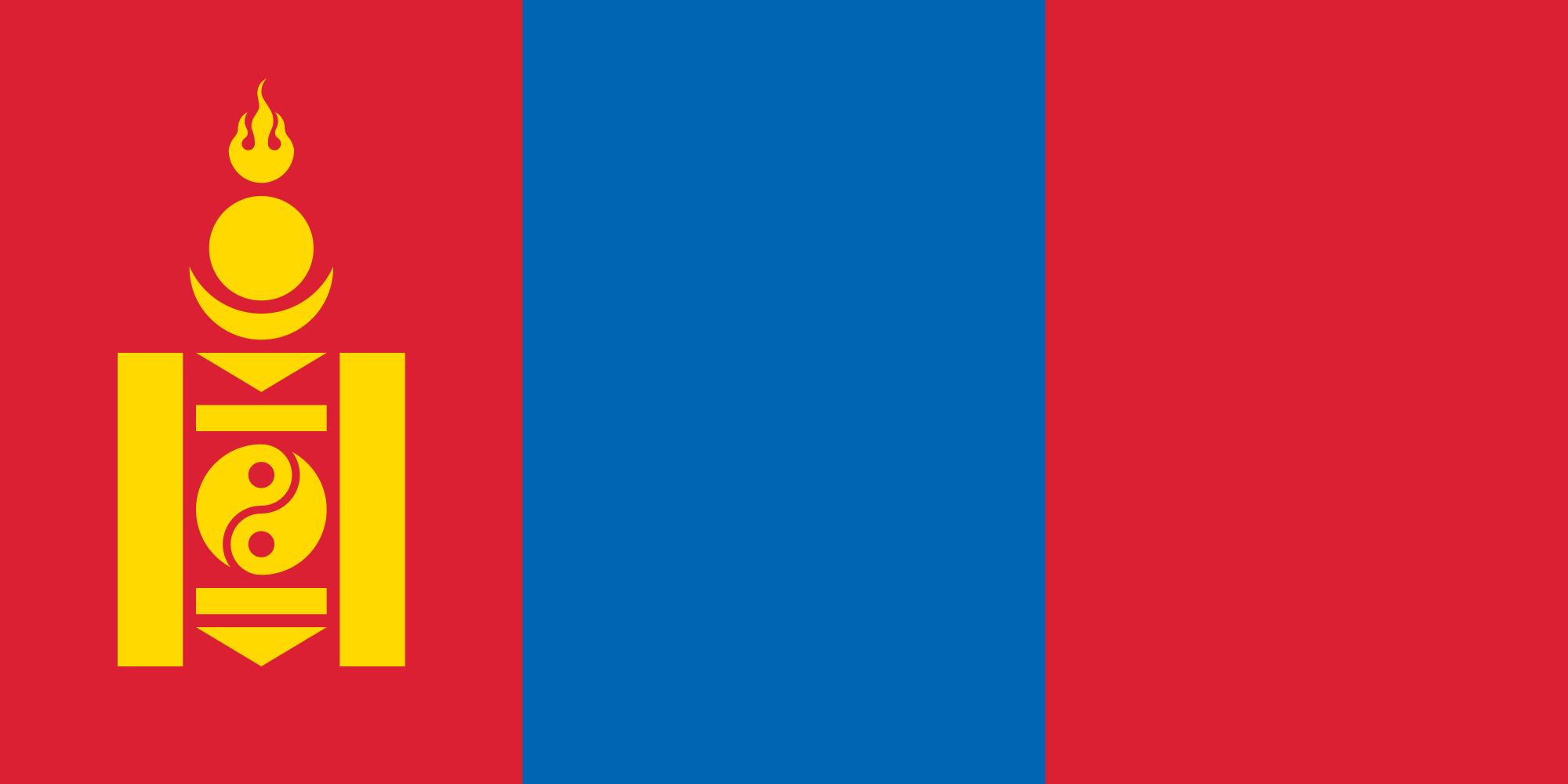 Mongolei
Mongolei
 Montenegro
Montenegro
 Mosambik
Mosambik
 Myanmar
Myanmar
 Namibia
Namibia
 Nepal
Nepal
 Neuseeland
Neuseeland
 Nicaragua
Nicaragua
 Niederlande
Niederlande
 Niger
Niger
 Nigeria
Nigeria
 Nordmazedonien
Nordmazedonien
 Norwegen
Norwegen
 Oman
Oman
 Österreich
Österreich
 Pakistan
Pakistan
 Panama
Panama
 Papua-Neuguinea
Papua-Neuguinea
 Paraguay
Paraguay
 Peru
Peru
 Philippinen
Philippinen
 Polen
Polen
 Portugal
Portugal
 Republik El Salvador
Republik El Salvador
 Republik Haiti
Republik Haiti
 Republik Kongo
Republik Kongo
 Republik Korea
Republik Korea
 Ruanda
Ruanda
 Rumänien
Rumänien
 Russland
Russland
 Salomonen
Salomonen
 Sambia
Sambia
 Samoa
Samoa
 Saudi-Arabien
Saudi-Arabien
 Schweden
Schweden
 Schweden
Schweden
 Schweiz
Schweiz
 Genf
Genf
 Senegal
Senegal
 Seychellen
Seychellen
 Sierra Leone
Sierra Leone
 Simbabwe
Simbabwe
 Singapur
Singapur
 Slowakei
Slowakei
 Slowakei
Slowakei
 Slowenien
Slowenien
 Slowenien
Slowenien
 Spanien
Spanien
 Sri Lanka
Sri Lanka
 St. Kitts und Nevis
St. Kitts und Nevis
 St. Lucia
St. Lucia
 St. Vincent und die Grenadinen
St. Vincent und die Grenadinen
 Südafrika
Südafrika
 Suriname
Suriname
 Swasiland
Swasiland
 Tadschikistan
Tadschikistan
 Taiwan Sheng-TW
Taiwan Sheng-TW
 Tansania
Tansania
 Thailand
Thailand
 Togo
Togo
 Tonga
Tonga
 Trinidad und Tobago
Trinidad und Tobago
 Tschad
Tschad
 Tschechien
Tschechien
 Tunesien
Tunesien
 Türkei
Türkei
 Uganda
Uganda
 Ukraine
Ukraine
 Ungarn
Ungarn
 Uruguay
Uruguay
 Vanuatu
Vanuatu
 Venezuela
Venezuela
 Vereinigte Arabische Emirate
Vereinigte Arabische Emirate
 Vereinigte Staaten
Vereinigte Staaten
 Vereinigtes Königreich
Vereinigtes Königreich
 Vietnam
Vietnam

 Wichtige internationale Organisationen
Wichtige internationale Organisationen
 World Trade Organization
World Trade Organization
 Roberto Azevêdo
Roberto Azevêdo
 World Trade Organization
World Trade Organization
 Mike Moore
Mike Moore
 World Trade Organization
World Trade Organization
 Ngozi Okonjo-Iweala
Ngozi Okonjo-Iweala
 World Trade Organization
World Trade Organization
 Pascal Lamy
Pascal Lamy
 World Trade Organization
World Trade Organization
 Peter Sutherland
Peter Sutherland
 World Trade Organization
World Trade Organization
 Renato Ruggiero
Renato Ruggiero
 World Trade Organization
World Trade Organization
 Supachai Panitchpakdi
Supachai Panitchpakdi
 Zentralafrikanische Republik
Zentralafrikanische Republik
 Zypern
Zypern


世界贸易组织(简称世贸组织或世贸;英语:World Trade Organization,缩写为 WTO;法语:Organisation Mondiale du Commerce,缩写为 OMC;西班牙语:Organización Mundial del Comercio,缩写为 OMC)是负责监督成员经济体之间各种贸易协议得到执行的一个国际组织,前身是1948年起实施的关税及贸易总协定的秘书处。
世贸总部位于瑞士日内瓦,现任总干事是罗伯托·阿泽维多。截至2016年7月29日,世界贸易组织共有164个成员。[5]世界贸易组织的职能是调解纷争,加入WTO不算签订一种多边贸易协议,但其设置的入会门槛可以做为愿意降低关税、法政上配合、参与国际贸易的门票,它是贸易体制的组织基础和法律基础,是众多贸易协定的管理者,是各成员贸易立法的监督者,是就贸易提供解决争端和进行谈判的场所。该机构是当代最重要的国际经济组织之一,其成员间的贸易额占世界贸易额的绝大多数,被称为“经济联合国”。
世界貿易機関(せかいぼうえききかん、英: World Trade Organization、略称:WTO)は、自由貿易促進を主たる目的として創設された国際機関である。常設事務局がスイスのジュネーブに置かれている。
GATT(ガット)ウルグアイ・ラウンドにおける合意によって、世界貿易機関を設立するマラケシュ協定(WTO設立協定)に基づいて1995年1月1日にGATTを発展解消させて成立した。
本来GATTは、第二次世界大戦後の安定を見据え、国際通貨基金および国際復興開発銀行とともに設立が予定されていた国際貿易機関(ITO)の設立準備の際に、暫定協定として結ばれたものであった。国際貿易機関の設立が廃案となり、GATTがその代替として発展強化されていくうちに、再びこの分野の常設機関が求められ、WTOが設立されることとなった。発展解消であるため、GATTの事務局及び事務局長もWTOへと引き継がれることとなった[4]。
WTOはGATTを継承したものであるが、GATTが協定(Agreement)に留まったのに対し、WTOは機関(Organization)であるのが根本的な違いである。
を基本原則としている。また、物品貿易だけでなく金融、情報通信、知的財産権やサービス貿易も含めた包括的な国際通商ルールを協議する場である。
対抗処置の発動では、紛争処理機関(パネル)の提訴に対し全加盟国による反対がなければ採択されるというネガティブ・コンセンサス方式(逆コンセンサス方式)を採用した強力な紛争処理能力を持つ。これは国際組織としては稀な例であり、コンセンサス方式を採っていたGATTとの大きな違いで、WTOの特徴の一つといえる。
新多角的貿易交渉(新ラウンド)は、2001年11月にカタールのドーハで行われた第4回WTO閣僚会議で開始を決定し、ドーハ・ラウンドと呼ばれていた。2002年2月1日の貿易交渉委員会で新ラウンドがスタートした。しかし9年に及ぶ交渉は先進国と、急速に台頭してきたBRICsなど新興国との対立によって中断と再開を繰り返した末、ジュネーブで行われた第4回WTO閣僚会議(2011年12月17日)で「交渉を継続していくことを確認するものの、近い将来の妥結を断念する」(議長総括)となり事実上停止状態になった。
その後、2013年のバリ島における閣僚会議で、貿易円滑化協定を含む合意が成立し、2014年7月まで貿易円滑化協定をWTO協定に加える(附属書1Aに追加)するための文書を一般理事会で採択すべきとされた[5]。しかしインドが合意を蒸し返す状態で反対したため期限までに採択できなかった[6]。その後食糧備蓄への補助金の問題で先進国側が譲歩することでようやくインドが合意し、2014年11月27日の一般理事会で貿易円滑化協定が採択された[6]。WTO加盟国の3分の2が改正を受諾した日に発効することになっており、2017年2月22日にこの要件を満たし、協定が発効した。
The World Trade Organization (WTO) is an intergovernmental organization that regulates international trade. The WTO officially commenced on 1 January 1995 under the Marrakesh Agreement, signed by 124 nations on 15 April 1994, replacing the General Agreement on Tariffs and Trade (GATT), which commenced in 1948. It is the largest international economic organization in the world.[5][6]
The WTO deals with regulation of trade in goods, services and intellectual property between participating countries by providing a framework for negotiating trade agreements and a dispute resolution process aimed at enforcing participants' adherence to WTO agreements, which are signed by representatives of member governments[7]:fol.9–10 and ratified by their parliaments.[8] The WTO prohibits discrimination between trading partners, but provides exceptions for environmental protection, national security, and other important goals.[9] Trade-related disputes are resolved by independent judges at the WTO through a dispute resolution process.[9]
The WTO's current Director-General is Roberto Azevêdo,[10][11] who leads a staff of over 600 people in Geneva, Switzerland.[12] A trade facilitation agreement, part of the Bali Package of decisions, was agreed by all members on 7 December 2013, the first comprehensive agreement in the organization's history.[13][14] On 23 January 2017, the amendment to the WTO Trade Related Aspects of Intellectual Property Rights (TRIPS) Agreement marks the first time since the organization opened in 1995 that WTO accords have been amended, and this change should secure for developing countries a legal pathway to access affordable remedies under WTO rules.[15]
Studies show that the WTO boosted trade,[16][17][9] and that barriers to trade would be higher in the absence of the WTO.[18] The WTO has highly influenced the text of trade agreements, as "nearly all recent [preferential trade agreements (PTAs)] reference the WTO explicitly, often dozens of times across multiple chapters... in many of these same PTAs we find that substantial portions of treaty language—sometime the majority of a chapter—is copied verbatim from a WTO agreement."[19]
L'Organisation mondiale du commerce (OMC ; en anglais : World Trade Organization, WTO, en espagnol : Organización Mundial del Comercio, OMC) est une organisation internationale qui s'occupe des règles régissant le commerce international entre les pays. Au cœur de l'organisation se trouvent les accords de l'OMC, négociés et signés en avril 1994 à Marrakech1 par la majeure partie des puissances commerciales du monde2 et ratifiés par leurs assemblées parlementaires. L'OMC a pour but principal de favoriser l'ouverture commerciale. Pour cela, elle tâche de réduire les obstacles au libre-échange, d'aider les gouvernements à régler leurs différends commerciaux et d'assister les exportateurs, les importateurs et les producteurs de marchandises et de services dans leurs activités.
Depuis 2001, le cycle de négociation mené par l'OMC est le Cycle de Doha3. Bien que l'OMC ne soit pas une agence spécialisée de l'ONU, elle entretient des liens avec cette dernière4. Le siège de l'OMC est au Centre William-Rappard, à Genève. Depuis le 1er septembre 2013, l'organisation est présidée par le Brésilien Roberto Azevêdo qui a été élu directeur général.
L'Organizzazione mondiale del commercio, abbreviato in OMC (in inglese: World Trade Organization, WTO), è un'organizzazione internazionale creata allo scopo di supervisionare numerosi accordi commerciali tra gli stati membri. Vi aderiscono[3] 164 Paesi, a cui se ne aggiungono altri 22 con ruolo di osservatori,[4] comprendendo così oltre il 95% del commercio mondiale di beni e servizi.[5]
La sede dell'OMC si trova, dal 1995, presso il Centro William Rappard a Ginevra, Svizzera.[6]
La Organización Mundial del Comercio (OMC) fue establecida en 1995. Tiene su sede en Ginebra, Suiza, y sus idiomas oficiales son el inglés, el francés y el español. La OMC no forma parte del sistema de las Naciones Unidas, y tampoco de los organismos de Bretton Woods como el Banco Mundial o el FMI.Nota 1
Всеми́рная торго́вая организа́ция (ВТО; англ. World Trade Organization (WTO), фр. Organisation mondiale du commerce (OMC), исп. Organización Mundial del Comercio) — международная организация, созданная 1 января 1995 года с целью либерализации международной торговли и регулирования торгово-политических отношений государств-членов. ВТО образована на основе Генерального соглашения по тарифам и торговле (ГАТТ), заключенного в 1947 году и на протяжении почти 50 лет фактически выполнявшего функции международной организации, но не являвшегося тем не менее международной организацией в юридическом смысле.
ВТО отвечает за разработку и внедрение новых торговых соглашений, а также следит за соблюдением членами организации всех соглашений, подписанных большинством стран мира и ратифицированных их парламентами. ВТО строит свою деятельность, исходя из решений, принятых в 1986—1994 годах в рамках Уругвайского раунда и более ранних договоренностей ГАТТ. Обсуждения проблем и принятие решений по глобальным проблемам либерализации и перспективам дальнейшего развития мировой торговли проходят в рамках многосторонних торговых переговоров (раунды). К настоящему времени проведено 8 раундов таких переговоров, включая Уругвайский, а в 2001 году стартовал девятый в Дохе, Катар. Организация пытается завершить переговоры по Дохийскому раунду переговоров, который был начат с явным акцентом на удовлетворение потребностей развивающихся стран. По состоянию на декабрь 2012 года будущее раунда переговоров в Дохе остаётся неопределённым: программа работы состоит из 21 части, а первоначально установленный окончательный срок 1 января 2005 года был давно пропущен[3]. В ходе переговоров возник конфликт между стремлением к свободной торговле и стремлением множества стран к протекционизму, особенно в плане сельскохозяйственных субсидий. До сих пор эти препятствия остаются главными и мешают любому прогрессу для запуска новых переговоров в рамках Дохийского раунда. По состоянию на июль 2012 года, существуют различные группы переговоров в системе ВТО для решения текущих вопросов в плане сельского хозяйства, что приводит к застою в самих переговорах[4].
Штаб-квартира ВТО расположена в Женеве, Швейцария. Глава ВТО (генеральный директор) — Роберту Карвалью ди Азеведу, в штате самой организации около 600 человек[5].
На 26 апреля 2015 года в ВТО состояли 162 страны[6].
Правила ВТО предусматривают ряд льгот для развивающихся стран. В настоящее время развивающиеся страны — члены ВТО имеют (в среднем) более высокий относительный уровень таможенно-тарифной защиты своих рынков по сравнению с развитыми. Тем не менее, в абсолютном выражении общий размер таможенно-тарифных санкций в развитых странах гораздо выше, вследствие чего доступ на рынки высокопередельной продукции из развивающихся стран серьёзно ограничен[7].
Правила ВТО регулируют только торгово-экономические вопросы. Попытки США и ряда европейских стран начать дискуссию об условиях труда (что позволило бы считать недостаточную законодательную защиту работников конкурентным преимуществом) были отвергнуты из-за протестов развивающихся стран, которые утверждали, что такие меры только ухудшат благосостояние работников в связи с сокращением числа рабочих мест, снижением доходов и уровня конкурентоспособности[7].
Mitglieder der WTO
| Staat | Beitrittsdatum |
|---|---|
| 30. Juni 1995 | |
| 29. Juli 2016 | |
| 8. September 2000 | |
| 23. November 1996 | |
| 1. Januar 1995 | |
| 1. Januar 1995 | |
| 5. Februar 2003 | |
| 1. Januar 1995 | |
| 1. Januar 1995 | |
| 1. Januar 1995 | |
| 1. Januar 1995 | |
| 1. Januar 1995 | |
| 1. Januar 1995 | |
| 22. Februar 1996 | |
| 12. September 1995 | |
| 31. Mai 1995 | |
| 1. Januar 1995 | |
| 1. Januar 1995 | |
| 1. Dezember 1996 | |
| 3. Juni 1995 | |
| 23. Juli 1995 | |
| 1. Januar 1995 | |
| 11. Dezember 2001 | |
| 1. Januar 1995 | |
| 1. Januar 1995 | |
| 1. Januar 1995 | |
| 1. Januar 1995 | |
| 9. März 1995 | |
| 31. Mai 1995 | |
| 21. Januar 1996 | |
| 7. Mai 1995 | |
| 1. Januar 1995 | |
| 13. November 1999 | |
| 1. Januar 1995 | |
| 1. Januar 1995 | |
| 14. Januar 1996 | |
| 1. Januar 1995 | |
| 1. Januar 1995 | |
| 1. Januar 1995 | |
| 23. Oktober 1996 | |
| 14. Juni 2000 | |
| 1. Januar 1995 | |
| 22. Februar 1996 | |
| 1. Januar 1995 | |
| 21. Juli 1995 | |
| 25. Oktober 1995 | |
| 31. Mai 1995 | |
| 1. Januar 1995 | |
| 30. Januar 1996 | |
| 1. Januar 1995 | |
| 1. Januar 1995 | |
| 1. Januar 1995 | |
| 1. Januar 1995 | |
| 1. Januar 1995 | |
| 1. Januar 1995 | |
| 21. April 1995 | |
| 1. Januar 1995 | |
| 9. März 1995 | |
| 26. Juni 2014 | |
| 1. Januar 1995 | |
| 11. April 2000 | |
| 13. Oktober 2004 | |
| 13. Dezember 1995 | |
| 1. Januar 1995 | |
| 23. Juli 2008 | |
| 30. November 2015 | |
| 13. Januar 1996 | |
| 1. Januar 1995 | |
| 20. Dezember 1998 | |
| 30. April 1995 | |
| 1. Januar 1997 | |
| 27. März 1997 | |
| 30. November 2000 | |
| 20. April 1995 | |
| 1. Januar 1995 | |
| 2. Februar 2013 | |
| 31. Mai 1995 | |
| 10. Februar 1999 | |
| 14. Juli 2016 | |
| 1. September 1995 | |
| 31. Mai 2001 | |
| 1. Januar 1995 | |
| 1. Januar 1995 | |
| 17. November 1995 | |
| 29. April 2012 | |
| 31. Mai 1995 | |
| 1. Januar 1995 | |
| 31. Mai 1995 | |
| 31. Mai 1995 | |
| 1. Januar 1995 | |
| 1. Januar 1995 | |
| 31. Mai 1995 | |
| 1. Januar 1995 | |
| 4. April 2003 | |
| 1. Januar 1995 | |
| 26. Juli 2001 | |
| 29. Januar 1997 | |
| 26. August 1995 | |
| 1. Januar 1995 | |
| 1. Januar 1995 | |
| 23. April 2004 | |
| 1. Januar 1995 | |
| 3. September 1995 | |
| 1. Januar 1995 | |
| 13. Dezember 1996 | |
| 1. Januar 1995 | |
| 1. Januar 1995 | |
| 9. November 2000 | |
| 1. Januar 1995 | |
| 1. Januar 1995 | |
| 6. September 1997 | |
| 9. Juni 1996 | |
| 1. Januar 1995 | |
| 1. Januar 1995 | |
| 1. Januar 1995 | |
| 1. Juli 1995 | |
| 1. Januar 1995 | |
| 22. Mai 1996 | |
| 1. Januar 1995 | |
| 22. August 2012 | |
| 26. Juli 1996 | |
| 1. Januar 1995 | |
| 11. Dezember 2005 | |
| 10. Mai 2012 | |
| 1. Januar 1995 | |
| 1. Januar 1995 | |
| 1. Januar 1995 | |
| 26. April 2015 | |
| 23. Juli 1995 | |
| 5. März 1995 | |
| 1. Januar 1995 | |
| 1. Januar 1995 | |
| 30. Juli 1995 | |
| 1. Januar 1995 | |
| 1. Januar 1995 | |
| 21. Februar 1996 | |
| 1. Januar 1995 | |
| 1. Januar 1995 | |
| 1. Januar 1995 | |
| 1. Januar 1995 | |
| 1. Januar 1995 | |
| 2. März 2013 | |
| 1. Januar 2002 | |
| 1. Januar 1995 | |
| 1. Januar 1995 | |
| 31. Mai 1995 | |
| 27. Juli 2007 | |
| 1. März 1995 | |
| 19. Oktober 1996 | |
| 1. Januar 1995 | |
| 29. März 1995 | |
| 26. März 1995[2] | |
| 1. Januar 1995 | |
| 16. Mai 2008 | |
| 1. Januar 1995 | |
| 1. Januar 1995 | |
| 1. Januar 1995 | |
| 10. April 1996 | |
| 1. Januar 1995 | |
| 1. Januar 1995 | |
| 24. August 2012 | |
| 11. Januar 2007 | |
| 31. Mai 1995 | |
| 30. Juli 1995 |
 Architektur
Architektur
 Religion
Religion
 Geographie
Geographie
 Weltkulturerbe
Weltkulturerbe
 Internationale Städte
Internationale Städte
 Wirtschaft und Handel
Wirtschaft und Handel